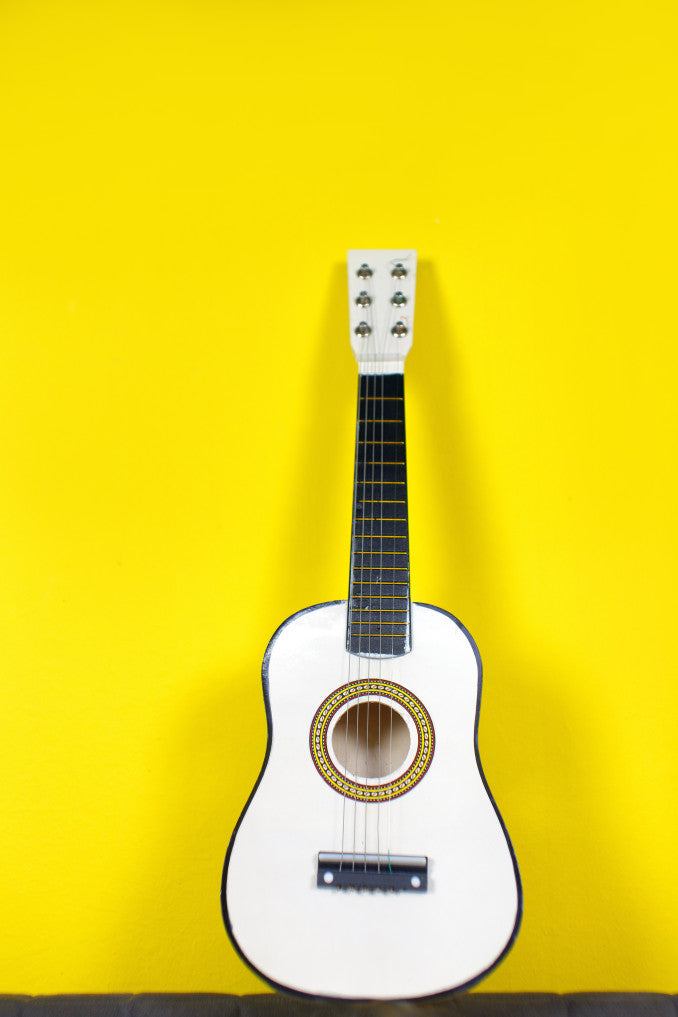
The Importance of Music in Hawaiian History
Hawaiian music is rooted in deeply religious and cultural ties and includes chanting and dance music. It was initially created as a form of storytelling to depict and remember Hawaiian history. Traditional songs were written about mythology, influential people, and important deeds in their community, in addition to accompanying games, festivals, and other forms of entertainment.
For a culture so beautifully involved in music, the Hawaiian language does not have a word that directly translates to "music." Instead, they have an array of words in their vocabulary that describe rhythm, instruments, dance, and vocal styles.
Mele: A Piece of Hawaiian History

Mele is the closest word the Hawaiian language has to music. It is a multi-functioning term that refers to poetic expression, chants, and songs. Mele is broken up into two distinct categories for chanting and dance music.
- Mele Oli: Typically performed by one individual who chants without any musical instruments.
- Mele Hula: Poems and songs were specifically written to be performed alongside dancers. Mele Hula is known for using musical instruments and their rhythms that guide the dancers.
Traditional Hawaiian Instruments
With mele being central to preserving Hawaiian history, musical devices are equally instrumental in developing and maintaining this art form. Thus, traditional Hawaiian musical instruments, in addition to modified instruments from visitors throughout Hawaiian history, play an essential role in Hawaiian culture.
- Pahu Hula
- Ukeke
- Kâ`eke `eke
- Ukulele
- Guitars
Hawaiian Hula Drum

The Hawaiian word Pahu translates to "drum" in English. With the literal translation of "Hula Drum," it is easy to see why this is the most crucial instrument accompanying the hula dance. It was also named the official traditional instrument of the state of Hawaii.
The Pahu has a tapered wooden body typically made of coconut tree stumps or other native wood and a masterfully carved base. The top portion of the drum is covered in sharkskin that has been stretched using rope for a tight seal. Modern pahu covers are made from cowhide.
Indigenous Ukeke String Instrument
The only string instrument indigenous to Hawaii is also the most widely distributed Oceanic string instrument. The ukeke, not to be confused with the ukulele, is a mouth bow instrument constructed from a thin piece of bent Koa wood and two to three strings. Koa wood is native to Hawaii and is greatly revered and considered sacred throughout Hawaiian history.
The Ukeke is primarily used between lovers. The instrument strings are strummed while the musician quietly chants a private love song into the mouthpiece, allowing those in love to have private conversations in public places.
It is widely used in love-making between married couples. However, since the instrument is quiet enough to maintain discretion but strong enough to be heard through walls or grass houses, it is also popular with those having illicit affairs.
Kâ`eke `eke: Hawaiian Idiophone

The Hawaiian idiophone is made of a bamboo tube with all but the bottom internal node removed, measuring between .3 and 1 meter long. It is played by smacking it against a mat or the ground. The length of the bamboo tube determines if the dancer is standing or sitting while playing.
Hula Kâ`eke `eke dancers typically have two Kâ`eke `eke of different lengths. The skill and focus required to create the beat using the Kâ`eke `eke, dance to the rhythm, and chant simultaneously are unmatched.
Throughout Hawaiian history, the Kâ`eke `eke has been used to tell stories through mele. Many factors determine the sound quality of the Kâ`eke `eke bamboo tubes, including the length, diameter, thickness, environmental conditions, and age.
Official State Musical Instrument: Ukulele
One of the most widely known Hawaiian instruments is not a native Hawaiian instrument at all. The ukulele was brought to Hawaii by Portuguese immigrants in the late 1800s.
According to Hawaiian history, the small guitars were given the name ukulele after watching how quickly the Portuguese musicians skipped their fingers across the strings. The name ukulele comes from the Hawaiian words "uku (flea)" and "lele (jump)."
In 2015, Hawaii appointed the ukulele as the official state modern musical instrument. In addition to their popularity in modern times and throughout Hawaiian history, the ukulele is highly sought after in countries worldwide. Some of the highest quality ukuleles are still made in Hawaii.
Steel & Slack Key Guitar

Two guitar variations that Hawaiians have made famous within multiple genres of music are the Slack Key and Steel Guitar. Guitars were first introduced to Hawaiians by Mexican cowboys, who were brought over to ranch the ever-increasing cattle population that native Hawaiians were forbidden to kill. The Hawaiian people took the guitar design from their Mexican visitors and adapted it to suit their style of music.
Playing the Steel Guitar
While it looks like a standard guitar, the steel guitar is played while laying flat either on a table or across the musician's lap. Holding the guitar in this manner is referred to as "Hawaiian Style."
Steel bars are placed on the fingers and are then used to pluck the strings, while steel tone bars are held in hand and give the musician the ability to slide or turn the bar to play strings you would ordinarily not be able to reach.
Slack Key Guitar
This guitar style is given its name because Hawaiian musicians literally loosened the strings on the initial Mexican guitars. They were said not to have liked the guitar's tuning and chose to loosen the strings to give a more robust sound.
In addition to adjusting the strings on the instrument, they realized plucking the strings instead of using a flat pick provided a more authentic Hawaiian sound. The slack key guitar is held upright in the more traditional guitar style.
Traditional Instruments, Timeless Music
When picturing Hawaii, it's natural to associate the islands and the people with music and dance. It is such an integral part of their culture and what it represents. However, the most fascinating aspect of Hawaiian history, specifically regarding music, is the ability and desire to maintain their traditional chants, dances, and instruments while also mastering instruments' reinvention to make them uniquely their own.
